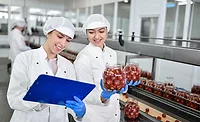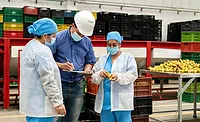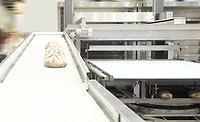Designing a Culture of Food Safety

Credit: Maksymenko Nataliia/iStock / Getty Images Plus via Getty Images
Over the last few years, Kerry has invested substantial resources to accelerate the company's journey to reach world-class food safety and quality benchmarks. This includes implementing preventive processes, investing significant capital into food safety, executing food-safety-by-design programs, implementing technology investments, and, of course, developing a culture of food safety that becomes self-reinforcing over time.
Food safety and quality have always been embedded in Kerry's company ethos and, together, form a cornerstone of the company's vision of corporate excellence. Even so, it is always good to take stock, given that food safety is an active and ever-evolving process that is ripe for ongoing improvement. Kerry does this by embedding a strong food safety mantra within the DNA of the company.
In the author's experience, there are three main tools for building and transforming a company's food safety program: fundamentals, prevention, and culture. In recent years, Kerry has focused heavily on building a solid foundation—the "fundamentals"—ahead of addressing the second and third elements of the transformation process: prevention and culture. Effective communication is critical throughout the entire process and becomes the fourth building block.
Check Up on Fundamentals
First and most important is to ensure that company fundamentals are in place. What is meant by this? At Kerry, it required an initial analysis of capital expenditures on infrastructure, policies, and food safety, and then a design for putting safety-focused technology investments to best use across the corporate structure. Knowledgeable outside industry experts were retained across teams to apply specialist experience and infuse it into the business practices—and Kerry made sure their recommendations were implemented. Ultimately, if objectives and infrastructure are at cross-purposes, it is vital to go back to the basics and develop a company-wide plan to close the gaps.
Prevention is Integral to Process and Mindset
Preventive programs, such as a strong root-cause analysis that leads to permanent corrective and preventive actions, are absolutely key. To use the analogy of the leaky boat, the first priority is to stop the water from flooding in. That means "food safety by design": interacting side-by-side with Research and Development to build food safety from a product design point-of-view, and then working closely with engineers to inject food safety and sanitation designs into the company's "genetic code," so to speak.
Looking for quick answers on food safety topics?
Try Ask FSM, our new smart AI search tool.
Ask FSM →
Putting together a strong procurement team ensures that suppliers are verified and that they take company priorities around food safety into consideration; both are essential components. In essence, the company must take a "safety first, quality always" preventive approach that is consistently reinforced by actions taken by all employees and suppliers.
Take a Long, Hard Look at Company Culture
It is not an overstatement to suggest that a business must continuously invest in reinforcing its culture of food safety. Culture is behavior, not just talk; in fact, it is the message an organization demonstrates through its actions—i.e., how the company conducts business and how people at all levels make decisions under pressure. Open-ended questions are a valuable way to understand the status of a company's culture: Do people understand their food safety roles, regardless of direct responsibilities (i.e., job description)? Do they have stated commitments and objectives to support the evolution of food safety and quality in their specific areas? Are they serious about walking their talk?
Kerry has rolled out a range of tools to instigate behavioral and cultural change within the company, with an aggressive implementation plan being enacted over the coming two years. It is the company's belief that the behavior and culture journeys are as important as getting the fundamentals right. Naturally, this is not a one-size-fits-all approach. Every company has unique needs and dynamics, so each food safety strategy must be tailored and company-specific. Doing everything by the book is important, but failure is virtually assured if the safety program design is not a good fit from the outset.
Communication—Both Listening and Speaking—is Crucial
Having outlined the three main tools for building and transforming a food safety culture, the next step is to share key thoughts about how best to communicate the strategy. Why? Simply put, no food safety program is complete without total company engagement. This makes communication the final pillar in the food safety framework.
At the top of the list is to foster a collaborative culture of communication in which every employee is encouraged to point out areas where safety processes can be improved. Since food safety is a continuous process of improvement, buy-in (i.e., active listening) by all levels of the company is a must. Since a business is only as strong as its weakest link, a robust safety framework will be a success only if all employees understand their roles. Employees must be proactive about supporting the strategy and becoming its advocate. To build this kind of strong food safety culture and communicate it well requires staff to understand and accept what they, and those around them, are and are not good at—something that is often hard to admit. However, there is no substitute for total transparency in the quest to build a strong food safety culture.
The next challenge is how to communicate a food safety message, and do it well. Two methods have worked well for Kerry so far:
- Gamification: Make the process enjoyable through games and interactive learning. For example, being able to explore a manufacturing plant virtually makes it much more fun and engaging for employees.
- Simplification: Take a complex topic and make it simple so that people can more easily follow. For example, create a digestible playbook with clear, detailed, easy-to-digest information.
Innovation
At Kerry, food safety is not an exception but a rule. It is another opportunity to "do good" and collaborate with the industry to continuously improve the world food supply. At the end of the day, good food safety is good business! Prevention is always less costly than reaction, and Kerry believes that only those food safety programs designed and constructed in the spirit of universal company engagement will achieve maximum success.








